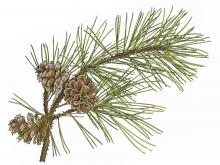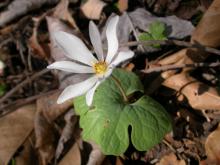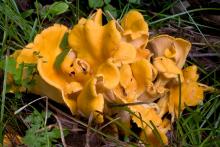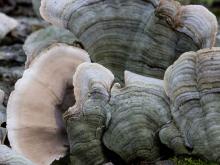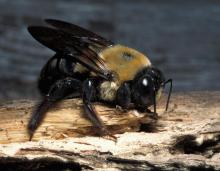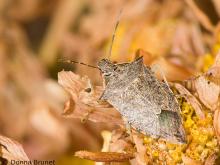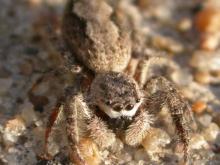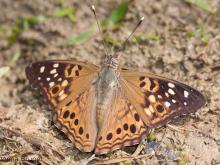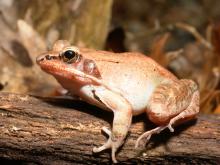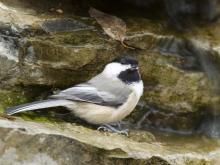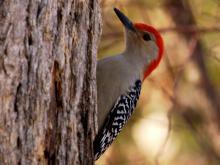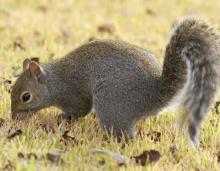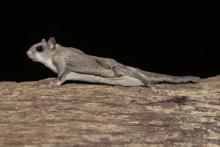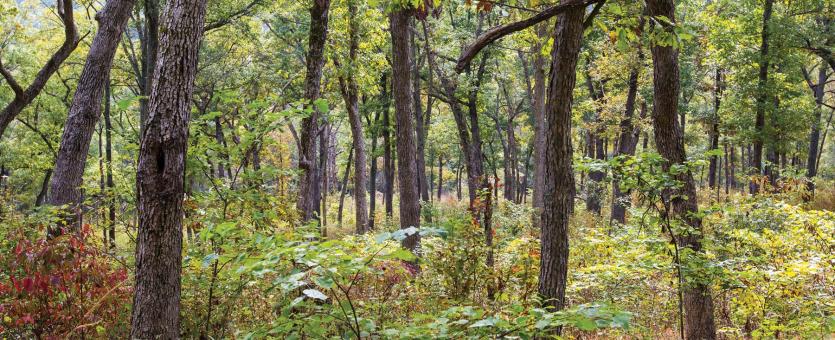
Browse Forests and Woodlands under Related Habitats below for a general introduction to Missouri's many kinds of wooded habitats.
Upland forests and woodlands in the Show-Me State fall into three main categories: dry, dry-mesic, and mesic.
Dry Woodlands
In Missouri, dry woodlands typically occur on south- and west-facing slopes with shallow, rocky soils, and in upland areas generally: hilltops, glades, and bluff tops, often on rocky, sandy, or thin soils. Although we have some dry-mesic forests, Missouri has no true forests that are classified as dry.
In our dry woodlands, the dominant trees, having little moisture, are typically fairly short, 30 to 60 feet, and the understory is relatively open, with scattered shrubs. The groundcover layer is dominated by sedges, grasses, and wildflowers.
Typical Plants in Dry Woodlands
The main canopy trees in dry woodlands include post oak, blackjack oak, chinquapin oak, black oak, white oak, bur oak, black hickory, white ash, shortleaf pine, sugar maple, and winged elm. In the Bootheel’s rare dry sand woodlands, southern red oak is a dominant canopy tree.
Understory plants, shrubs, and vines in dry woodlands include New Jersey tea, fragrant sumac, Carolina buckthorn, catbriar, dwarf hackberry, serviceberry, and lowbush blueberry. In the Bootheel, deciduous holly and American hazelnut are notable understory species.
Groundcover plants in dry woodlands include little bluestem, Indian grass, sedges, tick clovers, yellow pimpernel, woodland brome, rock muhly, sideoats grama, bristly sunflower, poverty grass, dittany, asters and goldenrods, pussytoes, Indian physic, and yellow crownbeard. In the Bootheel’s dry sand woodlands, there are rough buttonweed, rushfoil, sweet goldenrod, variegated milkweed, wood rush, eastern prickly pear, tick trefoils, and prairie bush clover.
Dry-Mesic Forests and Woodlands
Dry-mesic sites have more moderate amounts of soil moisture, so the canopy trees grow taller — 60 to 90 feet — and straighter than in drier sites.
Dry-mesic forests and woodlands occur mainly on ridges and east-and west-facing slopes. Soils average 3 feet in depth and are mainly silt loams.
Dry-mesic forests have a moderately developed, shade-tolerant understory. Because the canopy and understory shade the floor of these forests, the ground flora’s best season is in the spring; by midsummer it is patchy.
Dry-mesic woodlands typically share many of the same species as the nearby dry-mesic forests, but being woodlands, they have a more open canopy and a patchy to absent understory, permitting a well-developed, prominent groundcover.
Before European settlement, much of today’s Ozark forested landscapes were dry-mesic woodlands or savanna. Managed burns seek to restore these historic habitats.
Also, before widespread lumbering, shortleaf pine dominated vast tracts of the Ozarks. Most of these pine forests and woodlands grew back as oak-hickory forest. Land managers have been working to restore our pine and oak-pine forests and woodlands.
Typical Plants in Dry-Mesic Forests and Woodlands
Dominant or canopy trees include white, black, and several other oaks; shagbark, mockernut, and pignut hickories; and shortleaf pine. Other characteristic trees include maples and ashes.
Understory trees, shrubs, and woody vines include flowering dogwood, American hazelnut, fragrant sumac, eastern hop hornbeam, lowbush blueberry, serviceberry, Virginia creeper, summer grape, and Carolina buckthorn.
Ground-flora plants abound, though in true forests, most are dormant except in spring before the trees leaf out. In woodlands, grasses, sedges, and wildflowers are prominent all season long. Typical ground plants include sedges and grasses, tick trefoil, trillium, Christmas fern, black cohosh, spring beauty, toothwort, and false Solomon’s seal.
Mesic Forests and Woodlands
Our mesic forests and woodlands lie in areas between wetter lowlands and drier heights. Their soils are deep and loamy, and they typically occur on steep north- and east-facing slopes and ravines. The canopy is tall (often more than 90 feet).
As with dry-mesic forests, mesic forests typically have a well-developed understory of small trees and shrubs that restricts the ground layer to a profusion of spring wildflowers, before the forest floor is shaded.
Also like their dry-mesic counterparts, mesic woodlands have a more open canopy and a sparse understory, allowing a lush ground flora throughout the growing season.
Typical Plants in Mesic Forests and Woodlands
Canopy trees include northern red oak, white oak, sugar maple, basswood, black walnut, white ash, bitternut hickory, and, in southeastern Missouri, beech.
Understory plants include spicebush, maples, pawpaw, and grape vines.
The ground layer is lush in spring with many wildflowers, including bloodroot, Dutchman’s breeches, wild ginger, bellwort, hepatica, and trillium. There is also a variety of ferns, including broad beech fern, maidenhair fern, fragile fern, and narrow-leaved spleenwort.
Upland forests and woodlands can occur anywhere in the state and make up about 90 percent of our current wooded cover. They occur on hilly and rolling terrain statewide, but primarily in the Ozarks, in the southern half of the state. A typical satellite view of Missouri shows all our forests and woodlands in dark green.
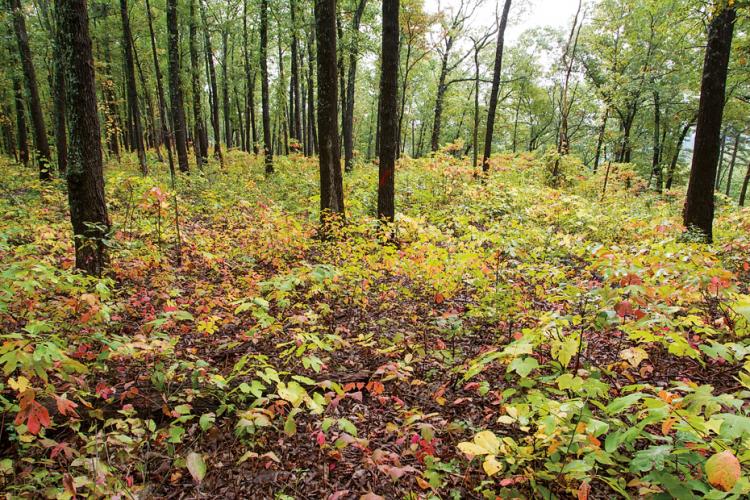
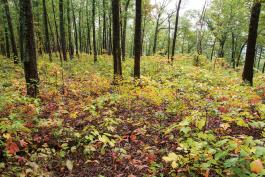
Key species


